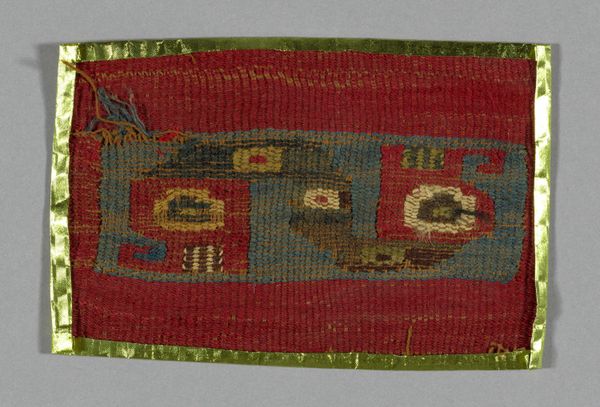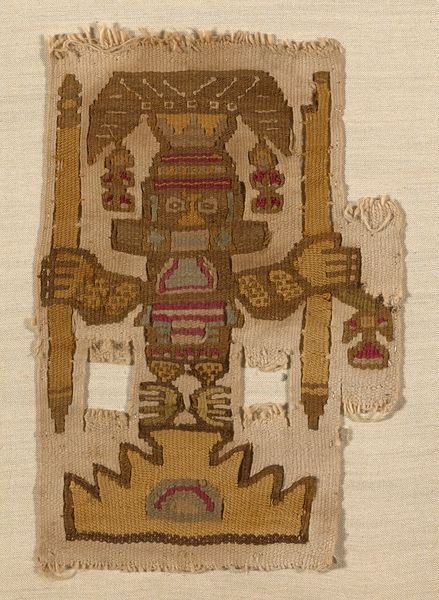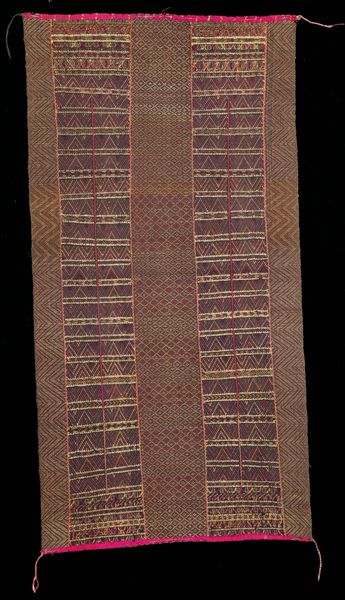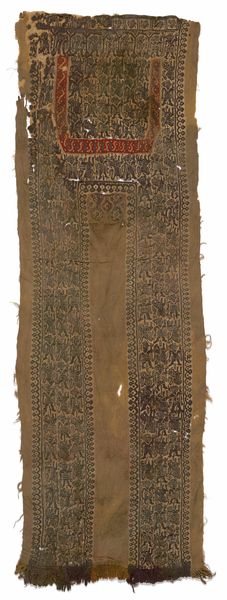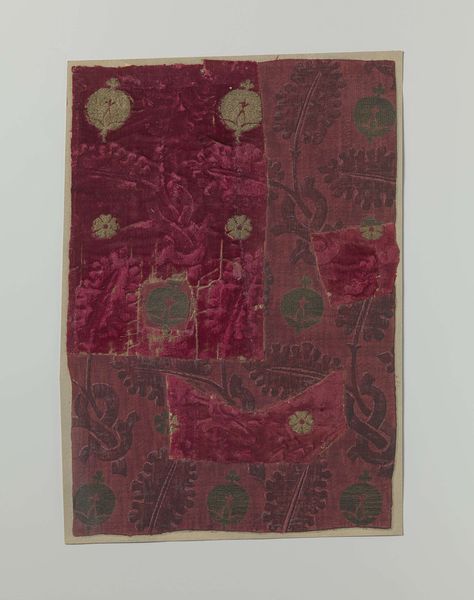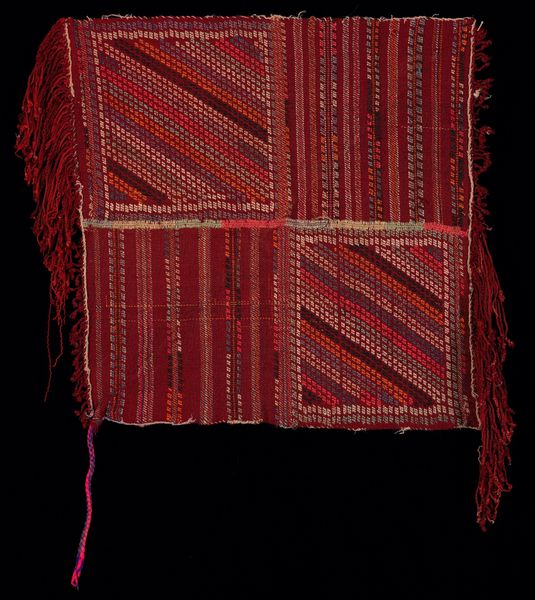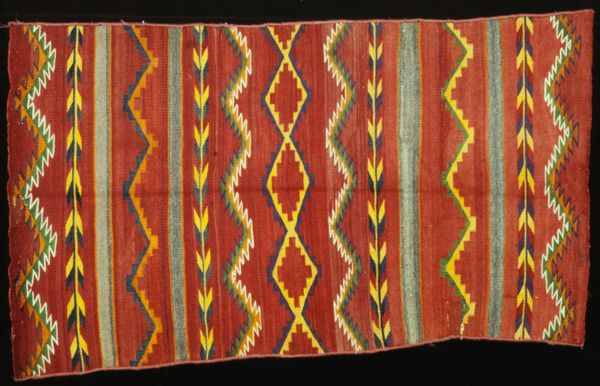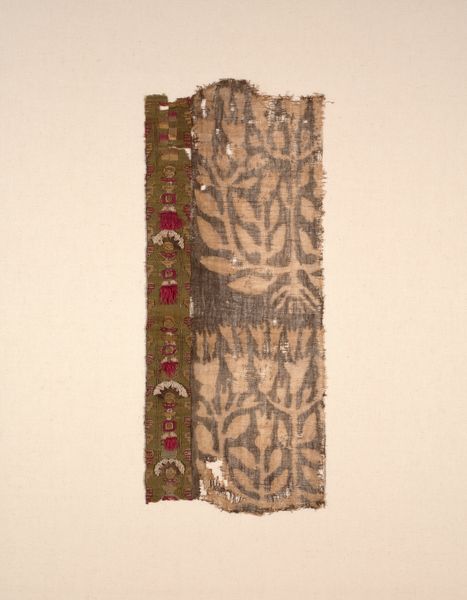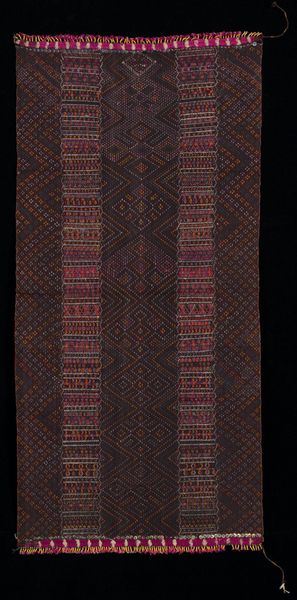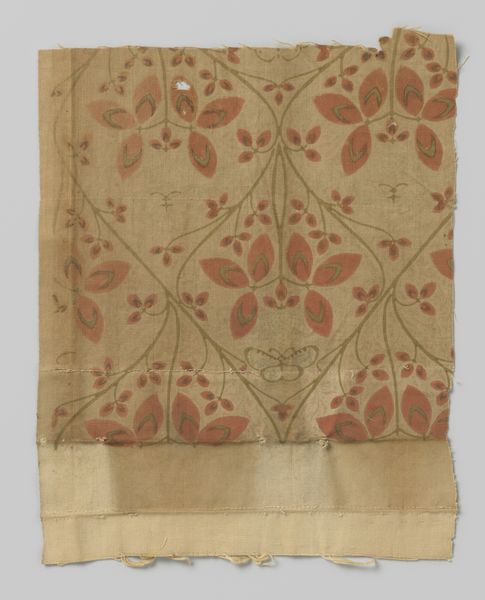
fibre-art, weaving, textile
#
fibre-art
#
weaving
#
textile
#
geometric
#
indigenous-americas
Dimensions: a: 41.3 × 10.2 cm (16 1/4 × 4 in.) b: 20.3 × 10.2 cm (8 × 4 in.) c: 11.4 × 8.3 cm (4 1/2 × 3 1/4 in.)
Copyright: Public Domain
Editor: We’re looking at “Band Fragments,” a textile piece dating from 1000 to 1476. It’s attributed to the Lambayeque culture and created using mixed media weaving techniques. What immediately strikes me is how surprisingly modern it feels, despite its age. How do you interpret this work, considering its cultural context? Curator: Given its age and origin, this textile likely had significance beyond mere decoration. Lambayeque society was highly stratified, with textiles often signifying status, power, and religious belief. The geometric and stylized plant-like motifs could represent specific deities, ancestors, or natural forces central to their worldview. It's a fragment, making definitive interpretations difficult; however, analyzing surviving examples gives invaluable insight. The standardization that existed during that time might mean the image conveyed societal cues or cultural ideas. What do you notice about the specific visual elements? Editor: The repetition is compelling. The fringe border emphasizes a geometric composition, and those striking fiber tufts definitely grab attention. The linear patterns look a bit like abstracted foliage, a blend of organic and constructed elements, really. Were these types of textiles widely available, or reserved for a select few? Curator: The level of craftsmanship suggests limited accessibility, used by elites or in ritual contexts. The intricate weaving implies specialized knowledge, signifying a degree of social hierarchy related to textile production itself. Did socio-political conditions lead to any innovations in art, like "Band Fragments?" Editor: Possibly, by standardizing imagery to share information or promote cultural unity across expanding political territories, like an Incan messaging service made visual. Thank you, I had not considered that. Curator: Precisely! It helps see how art isn’t just a standalone thing. We’ve covered societal impact on textile innovations, status roles of weaving in Andean Society, along with the influence it has on political dynamics, and so much more. This piece illustrates complex history embedded in an image!
Comments
No comments
Be the first to comment and join the conversation on the ultimate creative platform.
